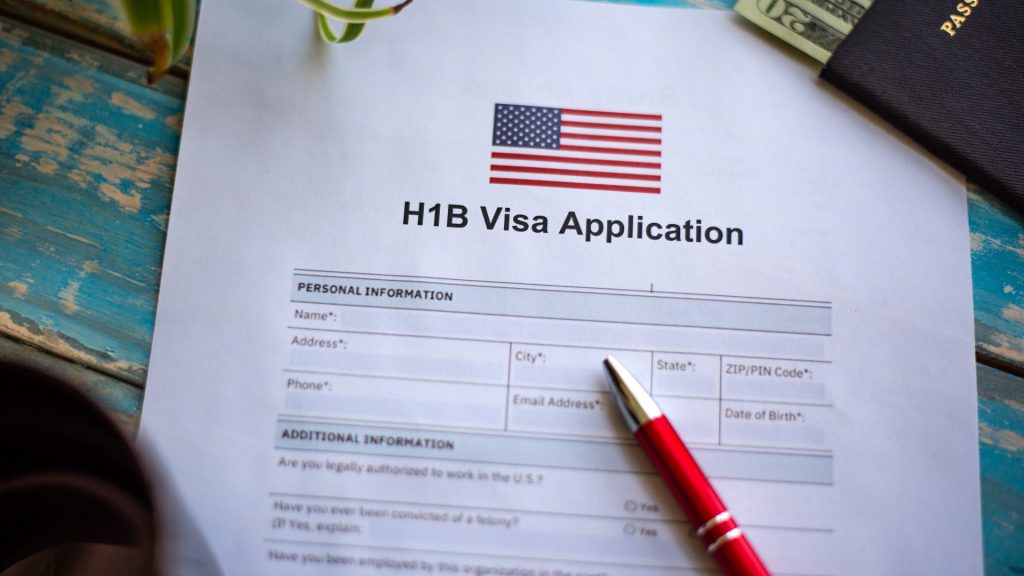The Department of Homeland Security (DHS) and the Department of Labor (DOL) issued new rules this week that will significantly alter the H-1B visa program and the computation of prevailing wages in connection with the H-1B, H-1B1, E-3 and PERM programs.
The changes will impact about 33 percent of H-1B visa applications, acting Department of Homeland Security Deputy Director Ken Cuccinelli told reporters Tuesday.
Find out more about the new interim final rules
H-1B visa program and prevailing wage use: Background information
The H-1B nonimmigrant visa category is available for U.S. companies to fill a “specialty occupation” with a qualified foreign national. A specialty occupation is one that generally requires a bachelor’s degree or higher, or its equivalent, as a minimum, entry-level credential.
An H-1B petition can be approved for a maximum initial period of three years and may be extended for an additional three years under certain circumstances.
There is a statutory cap that limits approval of new H-1B petitions in a fiscal year that is currently set at 85,000, with 20,000 reserved for foreign nationals who have obtained an advanced degree or higher from a U.S. college or university.
Certain visa types, including the H-1B visa, are subject to provisions established by the Immigration and Nationality Act requiring employers to pay H-1B workers the same rates as similarly employed U.S. workers, to guard against wage suppression and the replacement of U.S. workers by lower-cost foreign labor. This provision has been established in law for more than 50 years. However, the new rules substantially change the wage thresholds.
In connection with the H-1B visa program, the Department of Labor uses Occupational Employment Statistics (OES) data from the Bureau of Labor Statistics (BLS) to determine prevailing wages for a wide range of occupations. The prevailing wage rate is defined as the average wage paid to similarly employed workers in a specific occupation in the geographic area of intended employment.
The OES prevailing wage is subdivided into four tiers or wage levels, representing the range of skills from entry level to experienced. The DOL uses the same OES prevailing wage levels for the H-1B1, E-3 and PERM programs.
Specifics about new prevailing wage rules
The new DOL interim rule will significantly increase the calculation of prevailing wage levels by raising the entry level minimum to the 45th percentile. Specifically, the levels will be raised to:
- Level I: 45th percentile (from 17th)
- Level II: 62nd percentile (from 34th)
- Level III: 78th percentile (from 50th)
- Level IV: 95th percentile (from 67th)
Therefore, the DOL will raise the “required wage” for H-1B visas, which is equal to or higher than the “prevailing” wage for the specialty occupation in the local labor market or the “actual” wage paid by the employer to other workers with similar responsibilities and qualifications.
This will also impact wages connected to H-1B1 and E-3 applications as well as employment-based immigrant petitions requiring labor certifications. Specifically, the rule changes the way in which the DOL calculates the prevailing wage when based on OES surveys for each of these programs, leading to higher wages.
The new regulation does not prohibit employers from continuing to rely on alternative wage sources rather than DOL prevailing wage data for labor certification applications (PERM) and labor condition applications (H-1B, H-1B1, E-3).
Specifics about new H-1B visa program rules
Meanwhile, the DHS interim rule will tighten the definition of a “specialty occupation” by requiring a bachelor’s degree that has a “direct relationship” to the position being filled by the H-1B visa holder.
That rule will also alter specific “employer-employee” requirements and increase scrutiny of employers who place H-1B employees at third-party worksites.
Timing of changes
The interim final rule from the DOL will be published in the Federal Register on Oct. 8 and take effect immediately. The rule will not apply to any previously approved prevailing wage determinations, permanent labor certification applications or Labor Condition Applications.
The DHS rule will also be published on Oct. 8 but will not be implemented for at least 60 days.
Both the DHS and DOL interim final rules are expected to be challenged by lawsuits in federal court.
The attorneys at Garfinkel Immigration Law Firm continue to monitor the situation closely and will alert clients as the situation evolves.

